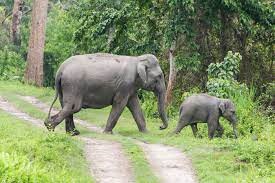Free Courses Sale ends Soon, Get It Now


Free Courses Sale ends Soon, Get It Now



Disclaimer: Copyright infringement not intended.
Context
Details
|
Ecosystem An ecosystem is a community of organisms and their physical environment interacting together. It also refers to a geographic area where plants, animals, and other organisms, as well as weather and landscapes, work together to form a bubble of life. Hence it is considered a system of various communities, their interactions (exchange of energy and recycling of the nutrients) and, the physical environment together. |
Amchang Wildlife Sanctuary

Disclaimer: Copyright infringement not intended
Fauna
Mammals
Birds and Butterflies
Reptiles
Flora
|
Important Bird and Biodiversity Area (IBA) IBA is a programme of Birdlife International to identify, monitor and protect a global network of IBAs. Hence these serve as conservation areas, including wetlands, mudflats, grasslands and scrublands etc., for protection of birds at the global, regional or sub-regional level. Objectives – Conservation of the world's birds and associated biodiversity. In India 554 IBAs have been identified by The Bombay Natural History Society (BNHS) and Birdlife International. |
Threats
Wild life Sanctuaries in India
|
Protected Areas of India Protected areas are those in which human occupation or at least the exploitation of resources is limited. There are several kinds of protected areas, which vary by level of protection and the legal framework of a country In India, there exists below type of protected areas –
|
|
PRACTICE QUESTION Consider the below statements about Wildlife-sanctuaries in India: 1. Wildlife-sanctuaries are also designated as Important Bird And Biodiversity Areas 2. No human activity is allowed as these are protected and reserved for wild life use Which of the above statements is/are true? a) 1 only b) 2 only c) Both d) Neither 1 nor 2 Correct Answer: (d) |
http://www.assaminfo.com/tourist-places/44/amchang-wildlife-sanctuary.htm
http://wiienvis.nic.in/database/iba_8463.aspx
http://wiienvis.nic.in/Database/wls_8230.aspx
http://wiienvis.nic.in/database/protected_area_854.aspx
© 2024 iasgyan. All right reserved